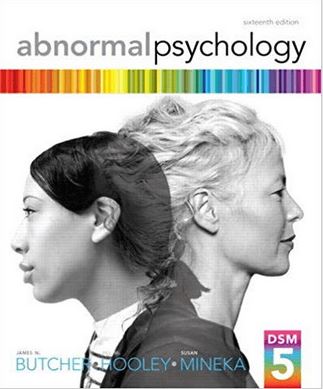Identifying, Assessing, and Treating Bipolar Disorder at School by Shelley R. Hart, ISBN-13: 978-1461475866
[PDF eBook eTextbook]
- Publisher: Springer (October 29, 2013)
- Language: English
- 188 pages
- ISBN-10: 1461475864
- ISBN-13: 978-1461475866
Bipolar disorder is a condition that has interested physicians, scientists, and philosophers for centuries. Historically, it has experienced an evolution of terms and concepts, which continues to this day. Mention of the phenomenon can be traced back to 1845, in a textbook of “mental diseases” by German psychiatrist, Wilhelm Griesinger, who described a circular pattern of alternation between mania and depression in the same patient. Years later, Emil Kraepelin published several volumes dedicated to the disorder, termed “Manic-Depressive Insanity,” to describe the condition, suggest biological origins, and distinguish it from schizophrenia in that there was believed to be complete recovery between episodes. In 1980, the diagnosis was fi rst recognized as an entity separate from unipolar depression in the third edition of the American Psychiatric Association’s (APA) Diagnostic and Statistical Manual of Mental Disorders (DSM), the diagnostic system used in the USA to classify mental health disorders (Pichot, 2006 ).
Typically characterized as a chronic and severe condition, a bipolar diagnosis is based on the presence of manic, hypomanic, and depressive symptoms. According to the most recent version of the DSM (DSM-5) there are three types of episodes (i.e., manic, hypomanic, and major depressive), which in conjunction with severity of symptoms and level of impairment result in seven possible bipolar diagnoses 1 : bipolar I disorder, bipolar II disorder, cyclothymia, substance-induced bipolar disorder, bipolar disorder associated with a known general medical condition, other specifi ed bipolar disorder and unspecifi ed bipolar disorder (APA, 2013). DSM has recently been updated and there was speculation that new criteria would embrace the potentially different presentation in children, however, only minor changes were made from DSM-IV-TR (see Chapter 5). Briefl y, the Mood Disorders category was divided and bipolar disorder included in its own chapter (i.e., Bipolar and Related Disorders), positioned between Depressive Disorders and Schizophrenia to emphasize its relationship to both, and several additional disorders were included (i.e., from four to seven). Figure 1.1 provides a brief breakdown. The essential feature of bipolar disorder has remained the same—the presence of a manic or hypomanic episode; major depressive episodes are often common, but not necessary for the diagnosis. Additionally, a new disorder Disruptive Mood Dysregulation Disorder (DMDD) was included to capture a more chronic, irritable presentation of mood disorder.
Shelley R. Hart, Ph.D., is currently a postdoctoral fellow at Johns Hopkins University in the Psychiatric Epidemiology Training Program, Department of Mental Health, Bloomberg School of Public Health. Her research at Hopkins has focused on individuals with emotional and behavioral challenges, specifi cally those with bipolar disorder or with suicidal thoughts and behaviors. Her academic prepa-ration consists of undergraduate and graduate degrees in psychology, with a Master of the Arts in Education from the California State University, Sacramento (school psychology credential) followed by a doctorate from the University of California, Santa Barbara, in the Department of Counseling, Clinical and School Psychology.
What makes us different?
• Instant Download
• Always Competitive Pricing
• 100% Privacy
• FREE Sample Available
• 24-7 LIVE Customer Support




Emma Clark (verified owner) –
Received my eBook almost instantly. Awesome!